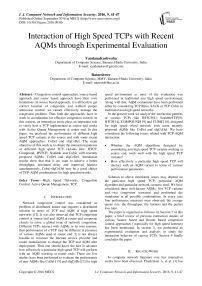Interaction of High Speed TCPs with Recent AQMs through Experimental Evaluation
Автор: VandanaKushwaha, Ratneshwer
Журнал: International Journal of Computer Network and Information Security(IJCNIS) @ijcnis
Статья в выпуске: 9 vol.8, 2016 года.
Бесплатный доступ
Congestion control approaches, source based approach and router based approach have their own limitations. In source based approach, it is difficult to get correct location of congestion and without proper admission control; we cannot effectively manage the congestion problem. Thus both the approaches have to work in coordination for effective congestion control. In this context, an interaction study plays an important role to verify how a TCP implemented at source end works with Active Queue Management at router end. In this paper, we analyzed the performance of different high speed TCP variants at the source end with some recent AQM approaches: CoDel and sfqCoDel. The main objective of this work is to obtain the interaction patterns of different high speed TCP variants like: HTCP, Compound, HSTCP, Scalable and Cubic with recently proposed AQMs: CoDel and sfqCoDel. Simulation results show that that if we want to achieve a better throughput, minimum delay and improved fairness simultaneously, Cubic-sfqCoDel may be a good choice of TCP-AQM combinations for high speed networks.
High Speed Networks, Congestion Control, Active Queue Management, TCP
Короткий адрес: https://sciup.org/15011577
IDR: 15011577
Текст научной статьи Interaction of High Speed TCPs with Recent AQMs through Experimental Evaluation
Network congestion control was considered as problem of distributed nature and requires a distributed solution in terms of TCP and AQM in high speed networks [12]. It was also observed that TCP congestion control at source end and AQM at router end cooperate closely to solve a global issue of network congestion. Different TCPs interact with AQMs in its own manner, thus performance of a TCP may be different in presence of various AQMs used at router end. It is not always feasible to convince the Internet service provider and router manufacturer to change the TCP and AQM after deployment. Thus one should know the fact in advance how effectively a particular high speed TCP will perform with an AQM working at router ends. There are few studies have been performed to evaluate the performance of new AQMs like CoDel [15] and sfqCoDel [7] for high speed environment as most of the evaluation was performed in traditional non high speed environment. Along with that, AQM evaluations have been performed either by considering TCP Reno, SACK or TCP Cubic in traditional non high speed networks.
In the present work we analyze the interaction patterns of various TCPs like HSTCP[4], ScalableTCP[9], HTCP[14], COMPOUND[19] and CUBIC[18], designed for high speed wired network with some recently proposed AQMs like CoDel and sfqCoDel. We have considered the following issues related with TCP-AQM interaction:
-
• Whether the AQM algorithms designed by considering non high speed TCP variants working at source end, work well with the high speed TCP variants?
-
• How effectively a particular high speed TCP will interact with an AQM variant in terms of various performance parameters.
Solution to above mentioned issues may depend on the particular high speed TCP, particular AQM algorithm and particular network scenario used. We have considered three well-known AQMs, five TCP variants and two congestion scenarios and performed the simulation in all possible combinations. In every case four performance measures were observed: the average queue size, the throughput, the fairness and the packet loss ratio.
The paper is organized as follows: In Section 2 of this paper, a brief review of previous interaction studies of various Source based and Router based congestion control approaches ( especially for high speed Internet) has been mentioned. In section 3, we performed an experimental evaluation and analysis to study the interaction behavior of various TCPs. Section 4 finally concludes the paper.
-
II. Related Work
In computer network literature very few interaction works have been observed. Chydzinski A. et al. [1] has studied the performance of AQM algorithms in Internet routers in presence of new versions of the TCP congestion control mechanism. They compared the performance of droptail, adaptive RED [5], AVQ [11], PI [8] and REM [13] queuing in four TCP cases: classic New Reno, Sack, Fack and Cubic. Through simulation they found that, the application of Fack and Cubic versions of TCP have (with some exceptions) minor impact on the basic performance characteristics (throughput and delay) of the router’s queuing mechanism. However, application of Cubic TCP has often a positive impact on the stability of the router’s queue size. As for the interflow fairness for different TCPs, the results are not univocal – both fairness improvement and degradation can be observed depending on the network congestion level.
-
A. Esheteet. al. [3] have performed simulation to study the intra protocol fairness and TCP friendliness properties of high speed TCP variants: HSTCP, Compound, BIC and Cubic in presence of AQM approaches RED, FRED and CHOKe at router buffer. They observed poor fairness among high speed TCP variants in presence of these AQMs. They proposed a new AQM AFpFT which helps battle the TCP heterogeneity and enforce fairness among the various considered TCP variants.
Lin Xue et al.[20] presented an experimental evaluation of the effect of various queue management schemes on high speed TCP variants in realistic10Gbps network environment. They evaluated queue management schemes such as Drop-tail, RED, CHOKe, and SFB for popular high speed TCP variants such as TCP-RENO, HSTCP, and CUBIC over CRON [2], a real 10Gbps high speed network test-bed. Performance results are presented for several important metrics of interests such as link utilization, fairness, delay, packet drop rate, and computational complexity. Their work support further research on the designand deployment issues of queue management schemes for high-speed networks.
N. Kuhn et al. [10] have performed simulations to compare RED’s gentle_ mode to CoDel in terms of their ability to reduce the latency for various TCP variants: New Reno, Vegas, Compound and Cubic. They found that CoDel reduces the latency by 87 %, but RED still manages to reduce it by 75 %. However, the use of CoDel results in a transmission time 42% longer than when using RED. They observed that RED could be considered as a good candidate to tackle Bufferbloat[6]. Rao V. et al. [17] has performed a comprehensive analysis of sfqCoDel for Active Queue Management. They compared sfqCoDel with CoDel in presence of two TCP variants TCP-SACK and Cubic, and found that sfqCoDel is much better than CoDel in certain areas where CoDel fails to perform well.
Our work extends the above contributions further by analyzing the interaction studies between different high speed TCP variants with most recent AQM solutions like CoDel andsfqCoDel.
-
III. Experimental Evaluation
In this section, we evaluate the interaction pattern of various high speed TCPs with RED, CoDel, and sfqCoDel. We conduct various experiments to simulate scenario in high speed networks.
-
A. Simulation Setup
The network simulator ns-2.35[16] is used to conduct a comparative analysis among various high speed TCPs. A single duplex bottleneck topology is used for all simulations shown in Fig. 1. The bottleneck bandwidth is set to 622Mbps and bottleneck round trip delay set to 48ms. Non bottleneck bandwidth of 1Gbps with round trip delay set to 1ms. Bottleneck buffer size is set to 8xBDP (bandwidth-delay product).
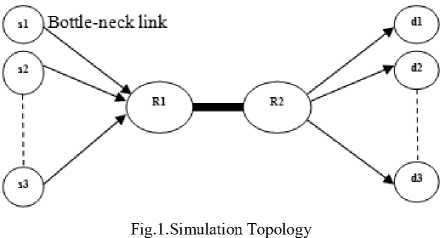
Five different variants of high speed TCPs: HSTCP, Scalable TCP, HTCP, COMPOUND and CUBIC are considered to be implemented at source end. Based on recommended values [15], the values of interval and target queue delay for CoDel are set to 100ms and 5ms respectively. We have performed the simulation by considering that all TCPs are having equal QoS requirements in terms of throughput and delay.
-
B. Simulation Scenarios
There are different possible simulations scenarios by considering different combinations of high speed TCP variants and AQM variants. We have performed various experiments by considering three traffic flows are assumed each using same high speed TCP variant at the source end. Simulation is performed for each TCP variant by considering different AQM variants one by one.
-
C. Performance Metrics
The major performance parameters considered for analysis are listed below:
-
• Throughput,
-
• Average queue size at the congested router,
-
• Packet drop rate and
-
• Intra-protocol-fairness.
-
D. Result and Analysis
In this section first we explain the result and analysis of various high speed TCPs in presence of different AQMs. We will compare the AQM-TCP interaction capability of three different AQMs RED, CoDel, and sfqCoDel with five different TCPs: HSTCP, Scalable TCP, Cubic, HTCP and Compound TCP. We considered three pairs of high speed TCP flows each using same TCP variant and sharing the common medium. Five different set of simulations have been performed, one for each TCP variant: HSTCP, Scalable TCP, HTCP, Cubic and Compound, by considering three different AQMs: RED, CoDel and sfqCoDel at bottleneck router one by one. A comparison is performed by considering each performance metric as follows:
-
• Average Queue Length
Fig. 2. exhibits the average queue length of router buffer in presence of five different high speed TCPs interacting with RED AQM.
Following observations can be found from figure 2:
-
• RED exhibits higher queue length while interacting with Cubic and HTCP.
-
• HSTCP performs best in terms of queue length in presence of RED.
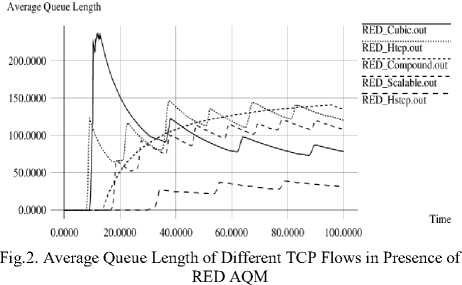
Fig. 3.exhibits the average queue length of router buffer in presence of five different high speed TCPs interacting with CoDel AQM.
Following observations can be found from figure 3:
-
• HSTCP and CUBIC performs better in terms of queue length in presence of CoDel AQM.
-
• Scalable TCP gives worst performance in terms of queue length management.
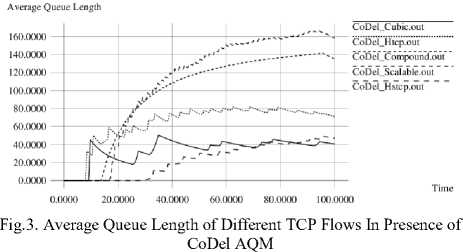
Fig. 4.exhibits the average queue length of router buffer in presence of five different high speed TCPs interacting with sfqCoDel AQM.
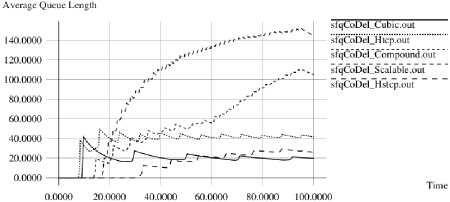
Fig.4. Average Queue Length of Different TCP Flows in Presence of sfqCoDel AQM
Following observations can be found from figure 4:
-
• HSTCP and CUBIC performs better in terms of queue length in presence of sfqCoDel AQM.
-
• Scalable TCP gives worst performance in terms of queue length management.
Thus we can conclude that HSTCP and CUBIC perform better in terms of queue length management while interacting with different AQM variants.
-
• Throughput
Fig. 5(a), 5(b), 5(c), 5(d) and 5(e) represent the throughput characteristics of five different TCPs in presence of AQM variant: RED at router end.
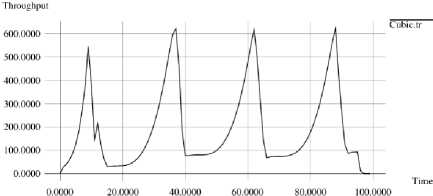
Fig.5(a). Total Throughput of Cubic TCP Flows in Presence of RED AQM
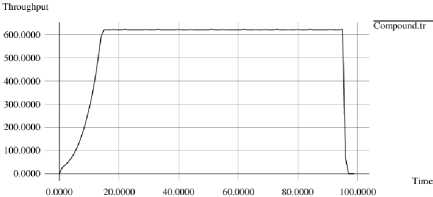
Fig.5(b). Total Throughput of Compound TCP Flows in Presence of RED AQM
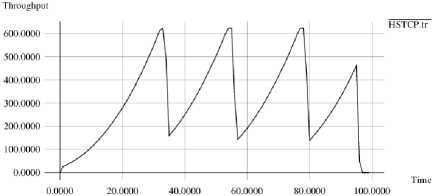
Fig.5(c). Total Throughput of HTCP TCP Flows in Presence of RED AQM

Fig.6(d). Total Throughput of Scalable TCP Flows in Presence of CoDel AQM
Fig.5(d). Total Throughput of Scalable TCP Flows in Presence of RED AQM
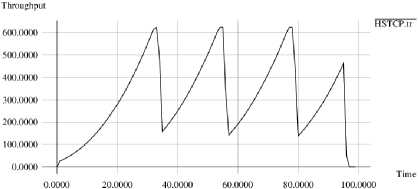
Fig.5(e). Total Throughput of HSTCP Flows in Presence of RED AQM
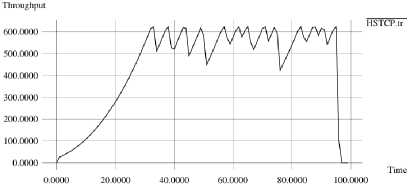
Fig.6(e). Total Throughput of HSTCP Flows in Presence of CoDel AQM
CUBIC TCP gives worst performance in terms of throughput while interacting with RED as it exhibits an oscillatory behavior. Compound TCP gives best performance as it provide higher throughput as compared with other TCPs.
Fig. 6(a), 6(b), 6(c), 6(d) and 6(e) represent the throughput characteristics of five different TCPs in presence of AQM variant: CoDel at router end.
From these figures it is clear that Compound and Cubic are equally able to provide a higher and constant throughput to source ends. While HTCP exhibits poor throughput performance with CoDel AQM.
Fig. 7(a), 7(b), 7(c), 7(d) and 7(e) represent the throughput characteristics of five different TCPs in presence of AQM variant: sfqCoDel at router end.
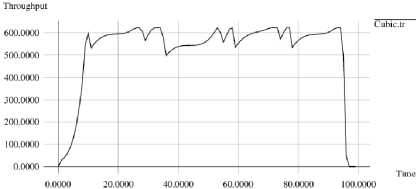
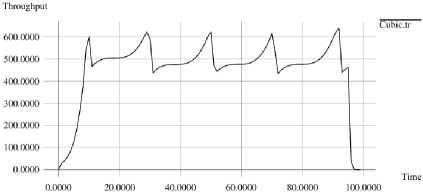
Fig.7(a). Total Throughput of Cubic TCP Flows in Presence of sfqCoDel AQM
Fig.6(a). Total Throughput of Cubic TCP Flows in Presence of CoDel AQM
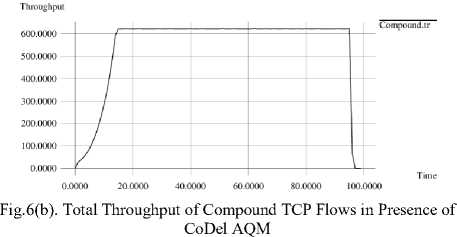
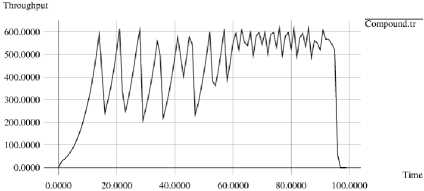
Fig.7(b). Total Throughput of Compound TCP Flows in Presence of sfqCoDel AQM
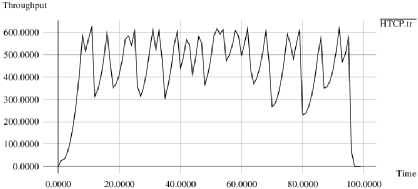
Fig.6(c). Total Throughput of HTCP Flows in Presence of CoDel AQM
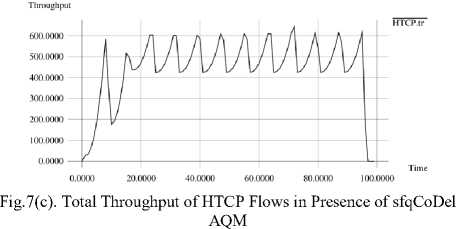
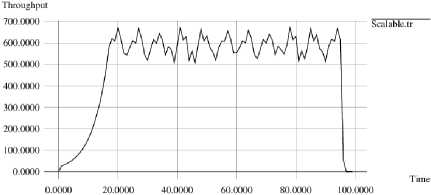
Fig.7(d). Total Throughput of Scalable TCP Flows in Presence of sfqCoDel AQM
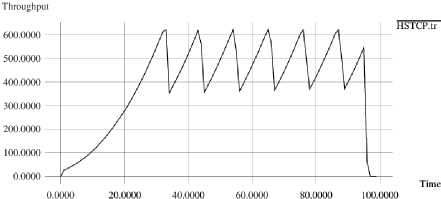
Fig.7(e). Total Throughput of HSTCP Flows in Presence of sfqCoDel AQM
From these figures it is clear that Scalable and Cubic TCP both are able to provide a higher throughput to source ends. While HSTCP and Compound exhibits lower throughput performance as compare to Cubic, while interacting with sfqCoDel AQM.
Table 1 and Fig. 8 further summarize the throughput performance of five different TCPs while interacting with three different AQMs.
Thus we can conclude that in terms of throughput Compound TCP is able to provide better performance as compared to other TCPs while interacting with different AQM variants.
-
• Fairness
1 0.95 0.9 0.85 0.8 0.75
Table 2 and Fig.9. summarize the performance of RED, CoDel and sfqCoDel in terms of fairness performance criterion. It can be observed from table2, Cubic and Compound TCPs are capable to achieve nearly equal fairness for three different TCPs. On the other hand Scalable TCP suffers from unfairness while interacting with RED AQM.
Table 2. Fairness Among TCPs using Different AQM
|
Fairness |
|||
|
RED |
CoDel |
sfqCoDel |
|
|
CUBIC |
0.9998 |
0.9977 |
0.9999 |
|
HTCP |
0.9993 |
0.9787 |
1 |
|
COMPOUND |
0.9999 |
0.9999 |
0.99955 |
|
HSTCP |
0.9973 |
0.944 |
1 |
|
SCALABLE |
0.8528 |
0.959 |
1 |
1.05
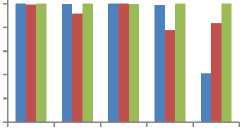

High speed TCPs
-
■ RED
-
■ CoDel
-
■ sfqCoDel
Table 1. Total Throughput of High Speed Tcps using Different AQM
|
Total throughput |
|||
|
RED |
CoDel |
sfqCoDel |
|
|
CUBIC |
222.941 |
545.43 |
472.625 |
|
HTCP |
267.52 |
450.827 |
458.605 |
|
COMPOUND |
560.511 |
560.511 |
441.94 |
|
HSTCP |
320.478 |
460.84 |
408.05 |
|
SCALABLE |
323.083 |
514.143 |
517.89 |
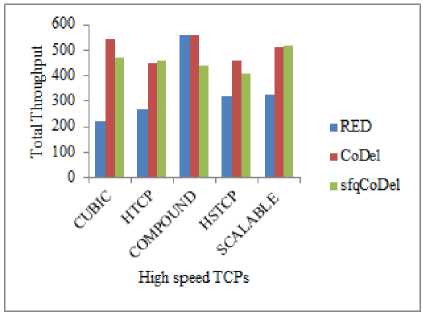
Fig.8. Total Throughput of TCPs using Different AQM
Fig.9. Fairness for Different AQMs in Presence of Different TCPs
• Packet Loss Rate:
Table 3 and Fig.10 shows the performance parameter packet loss rate for different combinations of high speed TCPs and AQMs.
Table 3.Packet Loss Percentage of TCPs using Different AQM
|
Packet loss percentage |
|||
|
RED |
CoDel |
sfqCoDel |
|
|
CUBIC |
8.45 |
0.00052 |
0.00135 |
|
HTCP |
4.697 |
0.0016 |
0.0034 |
|
COMPOUND |
0 |
0 |
0.0034 |
|
HSTCP |
0.0328 |
0.0008 |
0.0019 |
|
SCALABLE |
0.556 |
0.0252 |
0.0114 |
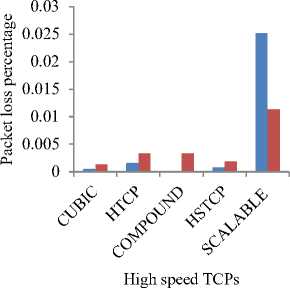
■ CoDel
■ sfqCoDel
од
0.062
0.06
0.058
^ 0.056
0.054
О’ 0.052
0.05 0.048 0.046 0.044
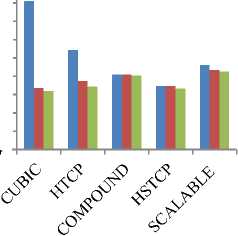
■ RED
■ CoDel
■ sfqCoDel
High speed TCPs
Fig.10. Packet Loss Percentage of TCPs using Different AQM
Fig.11. Average Queuing Delay of TCPs using Different AQM
We have found following observations:
-
• Cubic and HTCP are suffering a higher loss rate while interacting with RED AQM.
-
• Cubic and HSTCP both are equally better in terms of packet loss rate while interacting with CoDel and sfqCoDel AQM.
-
• Compound TCP gives best performance in terms of packet loss rate for all three AQMs.
-
• Scalable TCP suffers from a larger packet loss rate for all AQMs.
Thus we can conclude that Compound may be a good choice of TCP if our objective is to minimize packet loss rate.
-
• Average Queuing Delay:
Table 4 and Fig. 11 shows the performance parameter: average queuing delay for different combinations of high speed TCPs and AQMs.
We have found following observations:
-
• HSTCP performs best in terms of queuing delay while interacting with three AQMs.
-
• Cubic TCP gives minimal queuing delay for CoDel and sfqCoDel.
-
• Compound and Scalable TCP are equally good in terms of queuing delay.
Table 4. Average Queuing Delay of TCPs using Different AQM
|
Average queuing Delay |
|||
|
RED |
CoDel |
sfqCoDel |
|
|
CUBIC |
0.0602 |
0.0507 |
0.0504 |
|
HTCP |
0.05487 |
0.05145 |
0.05087 |
|
COMPOUND |
0.05218 |
0.05218 |
0.05205 |
|
HSTCP |
0.05092 |
0.05094 |
0.05063 |
|
SCALABLE |
0.0532 |
0.0527 |
0.0525 |
-
IV. Conclusion
TCP and AQM both play an important role for solving congestion in high speed networks. An interaction study has been performed for TCP-AQM interaction by considering five high speed TCP variants and three AQMs: RED, CoDel and sfqCoDel. Simulation results prove that if we want to achieve a better throughput, minimal delay and improved fairness simultaneously, CUBIC-sfqCoDelmay be a good choice of TCP-AQM combinations.
Список литературы Interaction of High Speed TCPs with Recent AQMs through Experimental Evaluation
- Chydzinski, A., Brachman, A. (2010). Performance of AQM routers in the presence of new TCP variants. In: Proceedings of the second international conference on advances in future internet. pp. 88–93.
- CRON, (2011). CRON Project: Cyberinfrastructure for Reconfigurable Optical Networking Environment. Retrieved from: http://www.cron.loni.org/.
- Eshete, A., Jiang, Y.,Landmark, L. (2012). Fairness among high speed and traditional TCP under different queue management mechanisms. In: Proceedings of the ACM asian internet engineering conference. pp. 39–46.
- Floyd, S. (2003). Highspeed TCP for large congestion windows, RFC3649.
- Floyd, S., Jacobson, V. (1993). Random early detection gateways for congestion avoidance.IEEE/ACM Transactions on Networking, Vol.1(4), pp: 397–413.
- Gettys, J., Nichols, K. (2012). Bufferbloat: dark buffers in the internet. Communications of the ACM, Vol.55(1), pp:57-65.
- Hoeiland-Joergensen, T., McKenney, P. et al. (2014). Flowqueue-Codel (draft-hoeilandjoergensen-aqm-fq-codel-00). Retrieved from: https://tools.ietf.org/html/draft-hoeiland-joergensen-aqm-fq-codel-00.
- Hollot, C., Misra, V., Towsley, D., Gong, W. (2002). Analysis and design of controllers for AQM routers supporting TCP flows. IEEE Transactions of Automatic Control, Vol.47, pp: 945–959.
- Kelly, T. (2003). Scalable TCP: improving performance in high speed wide area networks. Computer Communication Review, Vol.33(2), pp: 83–91.
- Kuhn, N., Lochin, E. et al. (2014). Revisiting old friends: Is codel really achieving what red cannot? In: ACM SIGCOMM Capacity Sharing Workshop. ACM, Chicago, IL, USA.
- Kunniyur, S., Srikant, R. (2001). Analysis and design of an adaptive virtual queue (AVQ) algorithm for active queue management. Computer Communication Review, Vol. 31(4), pp:123–134.
- Kushwaha V, Gupta R. Congestion control for high-speed wired network: a systematic literaturereview. Journal of Network and Computer Applications, Vol.45, pp: 62–78, 2014.
- Lapsley, D., Low, S. (1999). Random early marking: an optimization approach to internet congestion control. In: Proceedings of the IEEE ICON.
- Leith, D., Shorten, R. (2004). H-TCP: TCP for high-speed and long distance networks. In: Proceedings of the PFLDnet. 2004.
- Nichols, K., Jacobson, V. (2012). Controlling queue delay. Communications of the ACM, Vol.55(7), pp:42-50.
- Ns-2 Network Simulator. (n. d.). Retrieved from: (http://www.isi.edu/nsnam/ns/).
- Rao, V. P., Tahiliani, M. P. et al. (2014). Analysis of sfqCoDel for Active Queue Management, Applications of Digital Information and Web Technologies (ICADIWT).
- Rhee, I., Xu, L. (2008). CUBIC: a new TCP-friendly high-speed TCP variant. SIGOPS Operating System Review, Vol.42(5), pp:64–74.
- Tan, K., Song, J. (2006). Compound TCP: a scalable and TCP-friendly congestion control for high-speed networks. In Proc. 4th International Workshop on Protocols for FAST Long-Distance Networks, March 2006.
- Xue, L., Cui, C. et al. (2012). Experimental evaluation of the effect of queue management schemes on the performance of high speed tcps in 10gbps network environment. In proceeding of International Conference on Computing, Networking and Communications (ICNC), pp: 315-319, IEEE.

